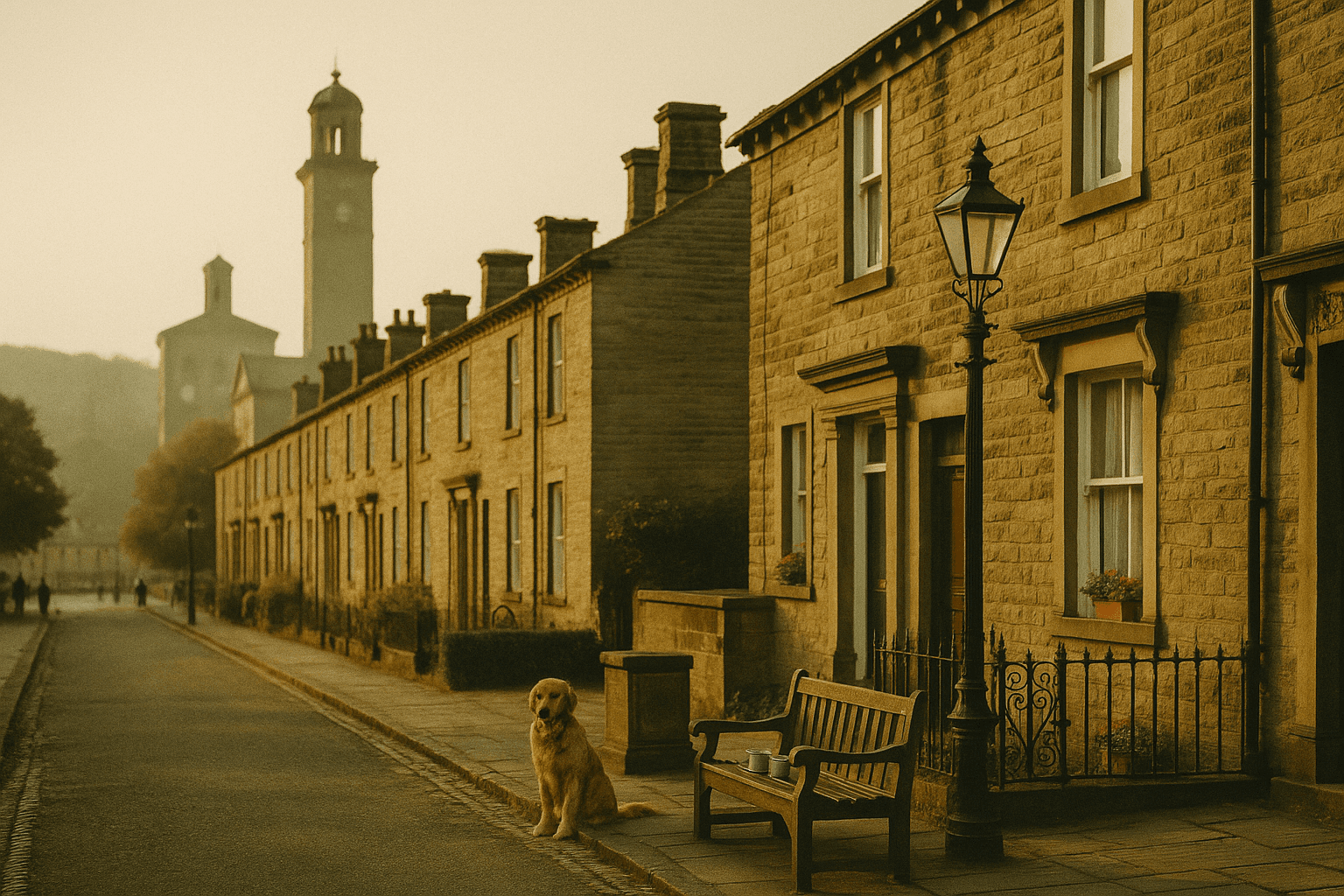Unified materials
Local sandstone with simple classical detail, slate roofs and original-style rainwater goods tie the ranges back to the village palette.
Philanthropic housing and care were central to the model village. The almshouses near the church provide dignified accommodation in a composed, garden setting — part of the civic ensemble along Victoria Road — while the historic hospital reflects changing approaches to public health.

The almshouses at Saltaire continue a long English tradition of providing secure, affordable accommodation for older or vulnerable residents. Their siting near the Congregational Church (URC) and the civic cluster on Victoria Road expresses the model village’s balance of work, welfare and worship.
Modest in scale but rich in craft, the ranges use the same disciplined stone palette as the rest of the village. Front gardens and boundary walls soften the street and create a calm, domestic setting — part of Saltaire’s distinctive character.
This page summarises well-established references and official listings; it avoids quoting prices/eligibility or giving access details for private homes.
Local sandstone with simple classical detail, slate roofs and original-style rainwater goods tie the ranges back to the village palette.
Regular bay rhythms, low garden walls and ironwork contribute to a quiet, dignified frontage. Door surrounds and name tablets may vary by range.
Proximity to the church underlines the philanthropic intent: practical welfare within a moral and community framework.
Planting and small greens create privacy and neighbourly shared space without losing the disciplined classical order.
Conservation tip for owners: match stone and pointing with breathable lime mortars where appropriate; avoid plastic window/door replacements on principal façades. See our maintenance guidance.
Almshouses were intended to offer security and dignity — typically for older residents, widows or those with limited means. In Saltaire, they were part of a wider programme that included schooling, recreation and religious life.
The model was neither ostentatious nor mean: modest accommodation with careful detailing, healthy outlook and easy access to the village’s civic facilities.
The village’s historic health provision changed through the late 19th and 20th centuries in step with national reforms. While the specific buildings and names altered, the principle of accessible care for local people remained constant.
If you are researching family history or historic admissions, consult local archives, newspapers and health authority records. Modern NHS services are provided beyond the World Heritage Site footprint.

A short loop from Saltaire station takes in the church, almshouses and Victoria Hall. Use your maps app to navigate.
Map: Google Maps (search: Saltaire Almshouses)
Combine with the church, Victoria Hall and a stroll to Roberts Park.
Italianate portico, tower and dome; Salt family mausoleum.
Civic classical set piece on Victoria Road.
Opened 1868; now part of Shipley College.
Gentle loops with step-free options.
Official overview of the World Heritage Site (criteria, OUV, boundaries).
Local authority context and guidance.
Listing entries for buildings in and around the almshouse cluster.
Background on village institutions, philanthropy and social history.
We prioritise official and primary references and keep this page updated.
They provided rent-free or subsidised accommodation for older or vulnerable residents in dignified surroundings close to the church and village centre.
No — these are people’s homes. You are welcome to view the façades from public streets and footways. Please be quiet and respectful.
The historic hospital provision evolved through the 20th century. Modern healthcare for the area is provided by NHS services beyond the village.
Yes, various components in this part of Saltaire are listed. For exact gradings and descriptions, consult the National Heritage List for England.